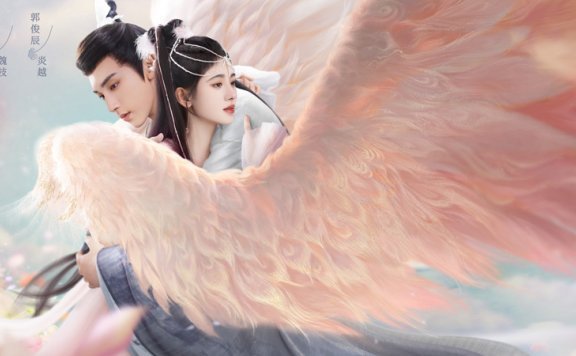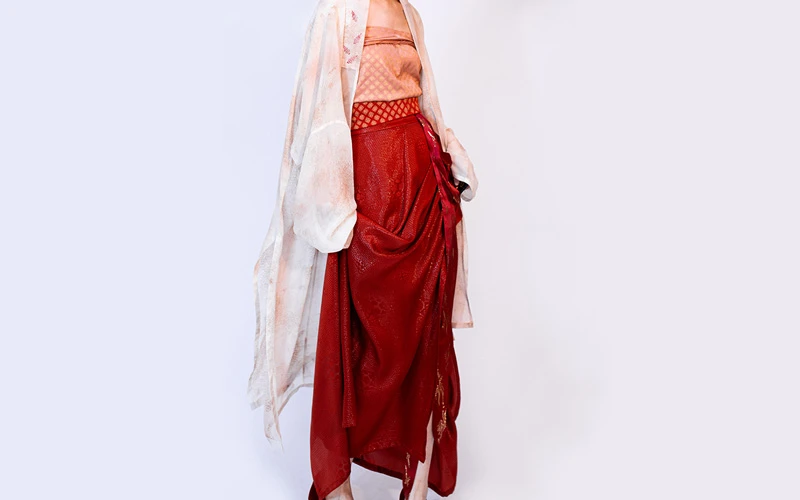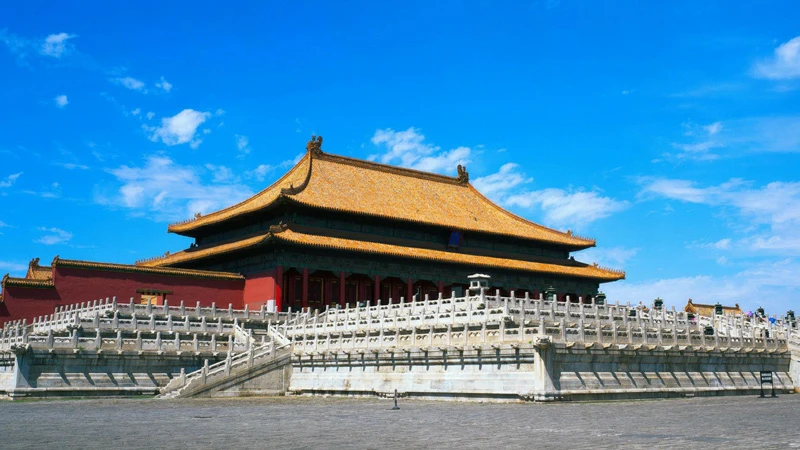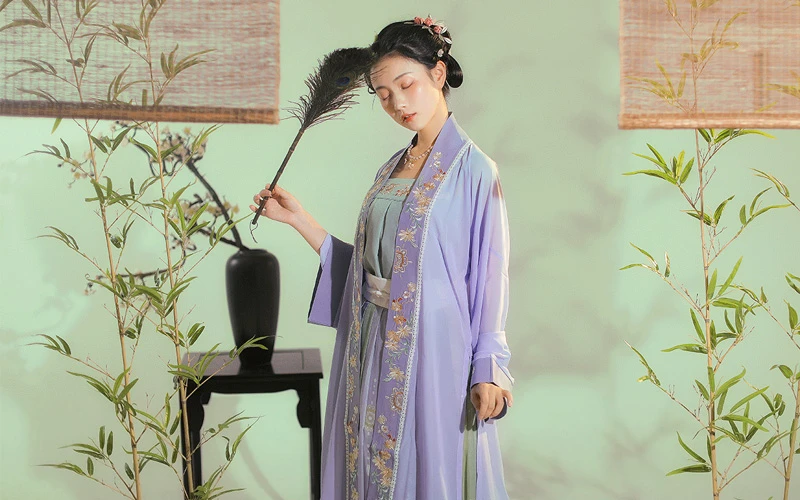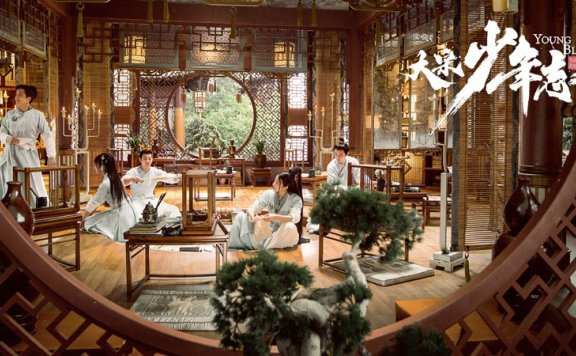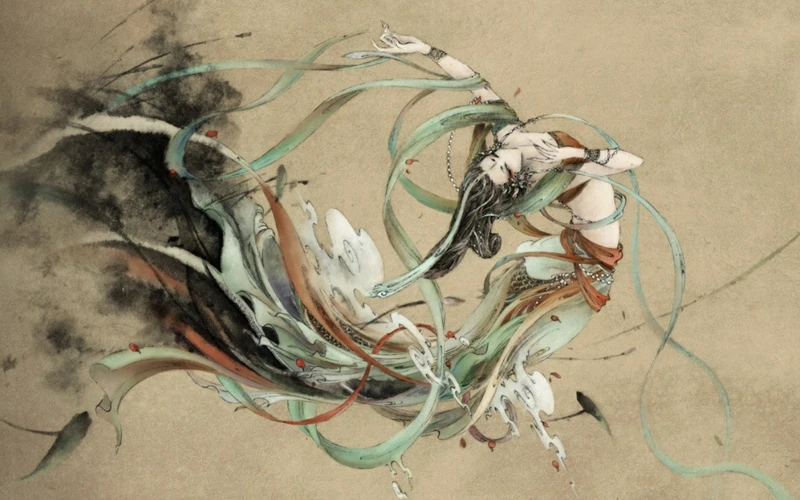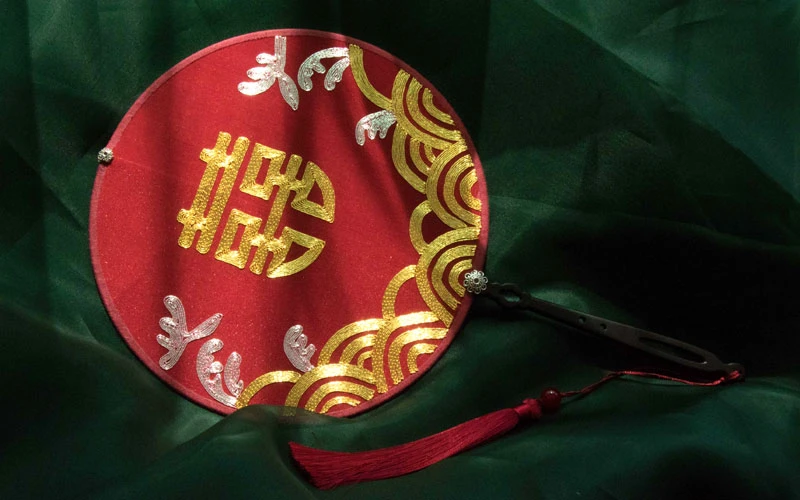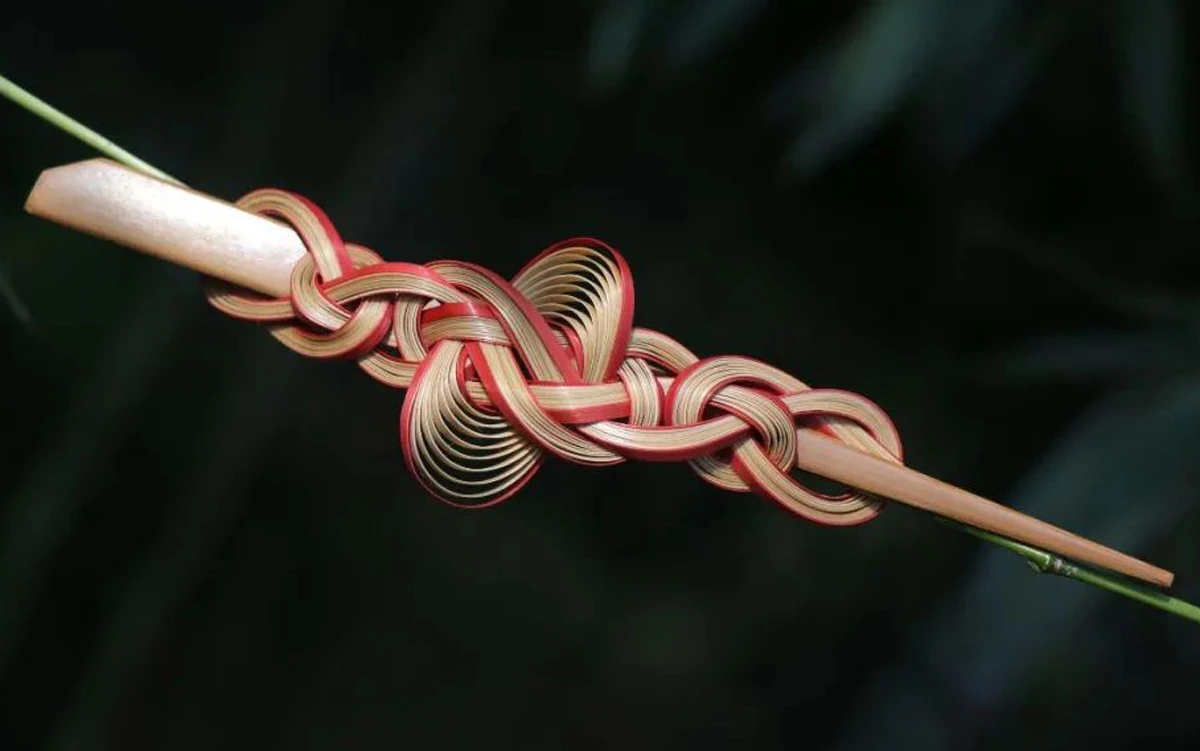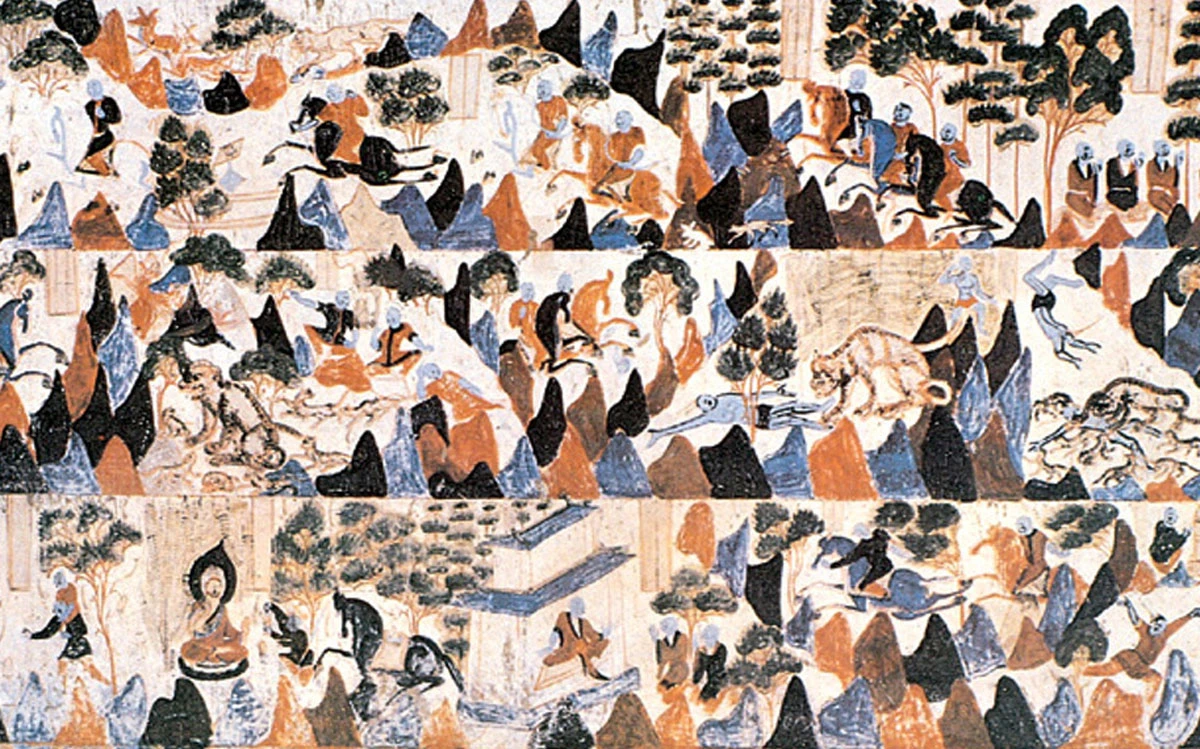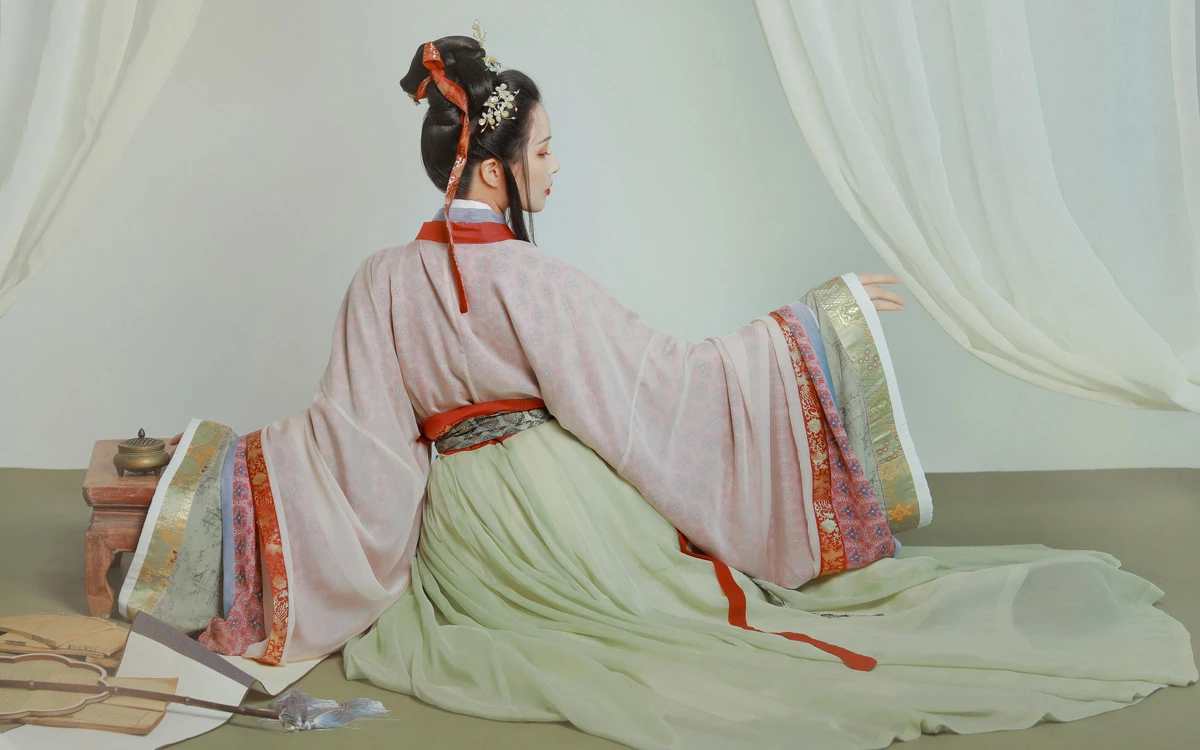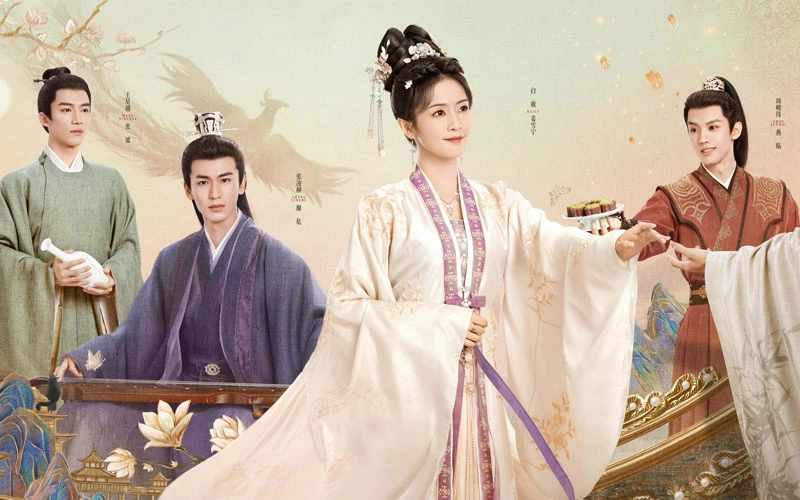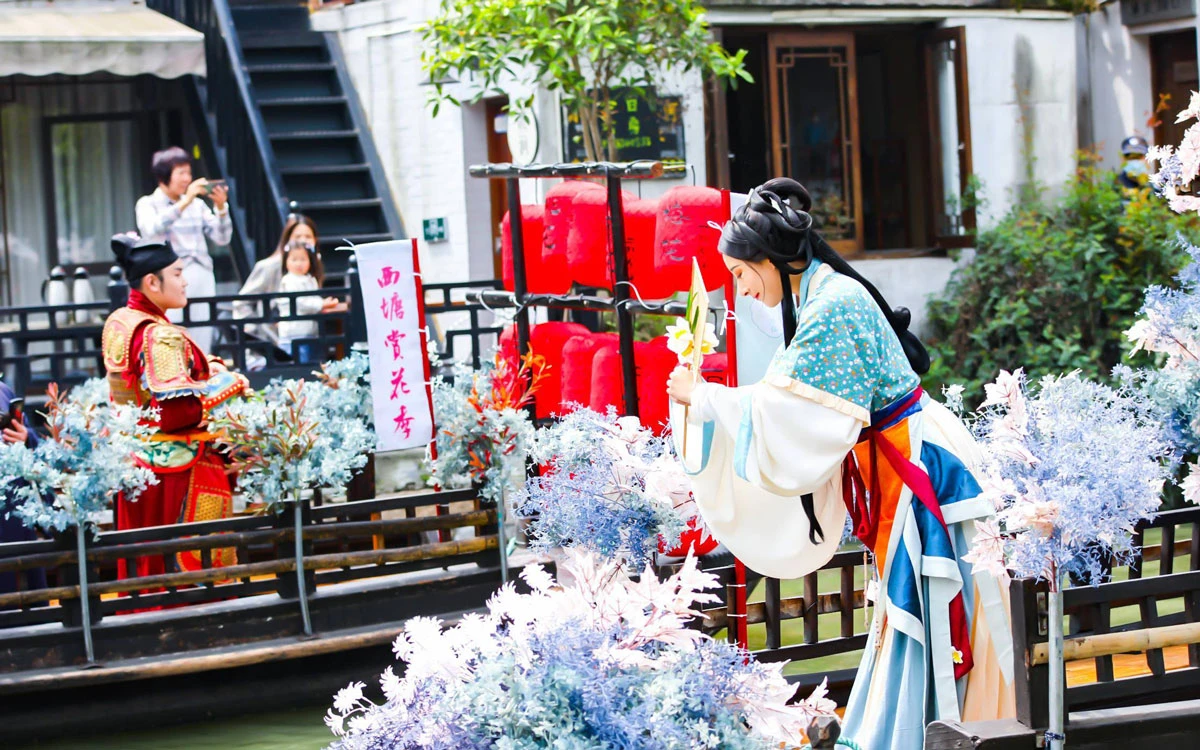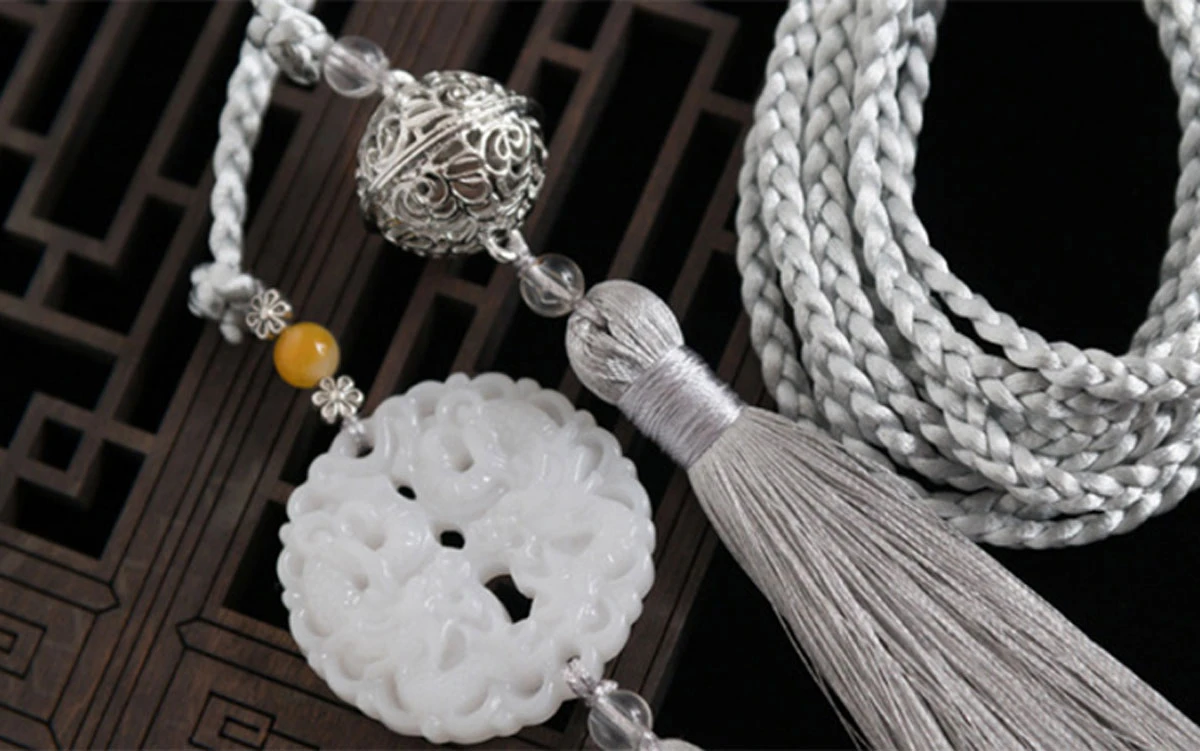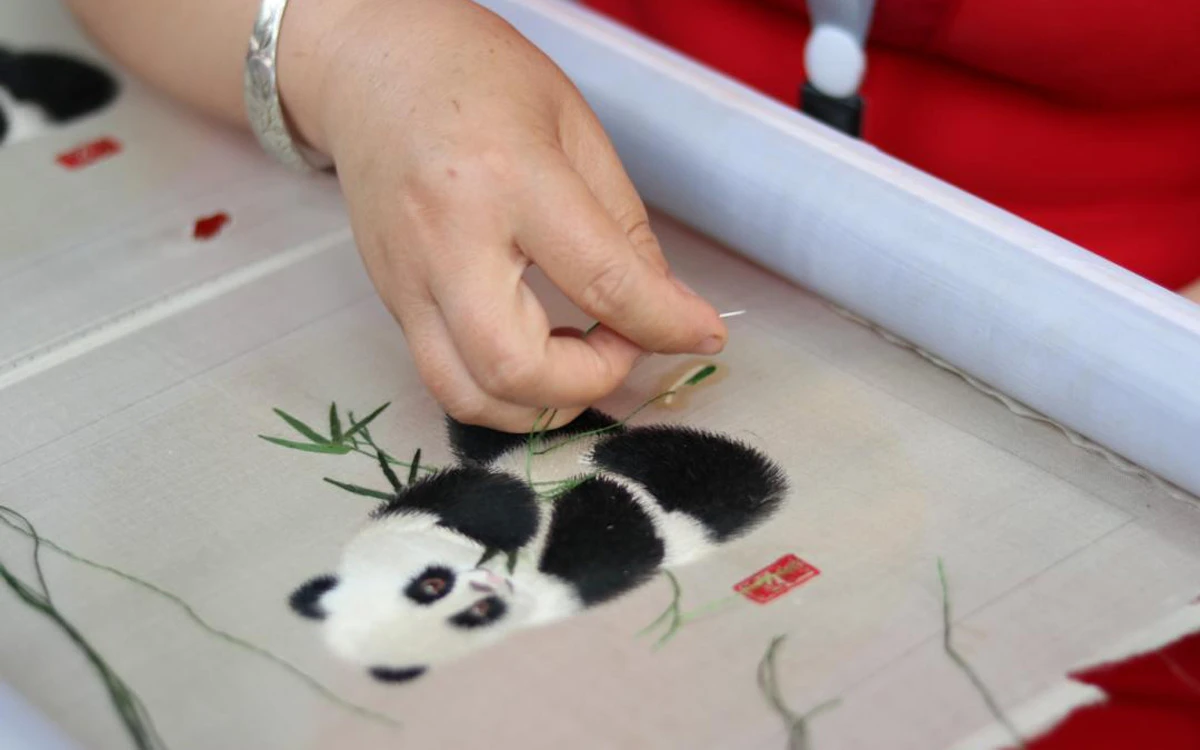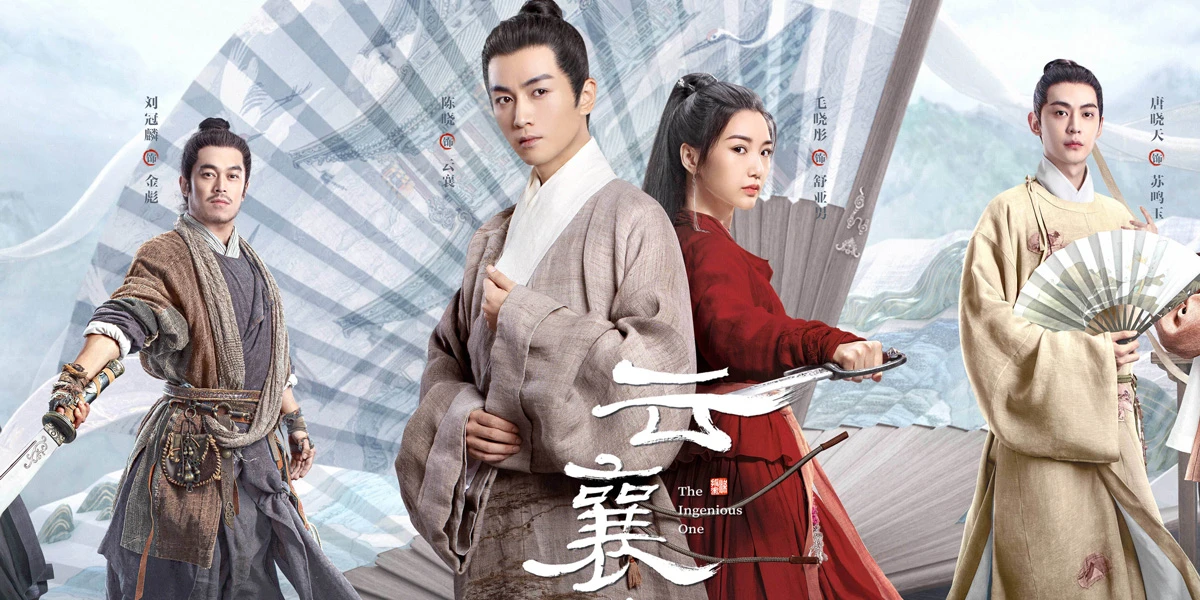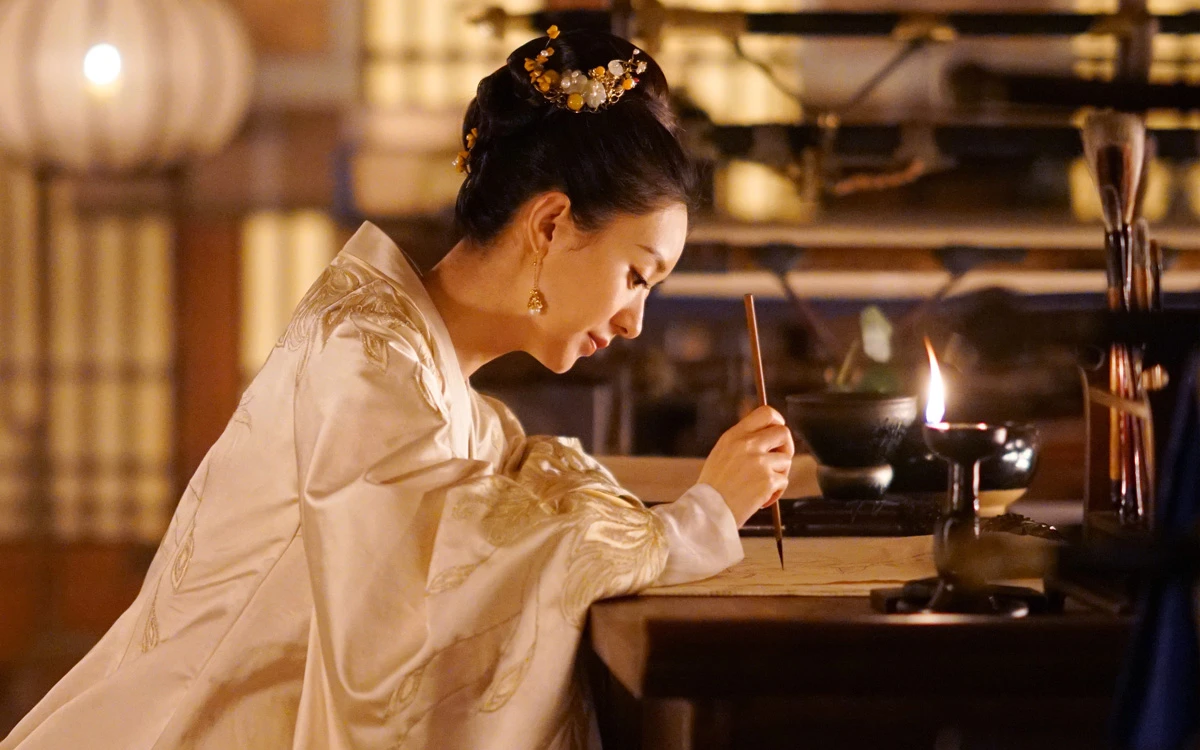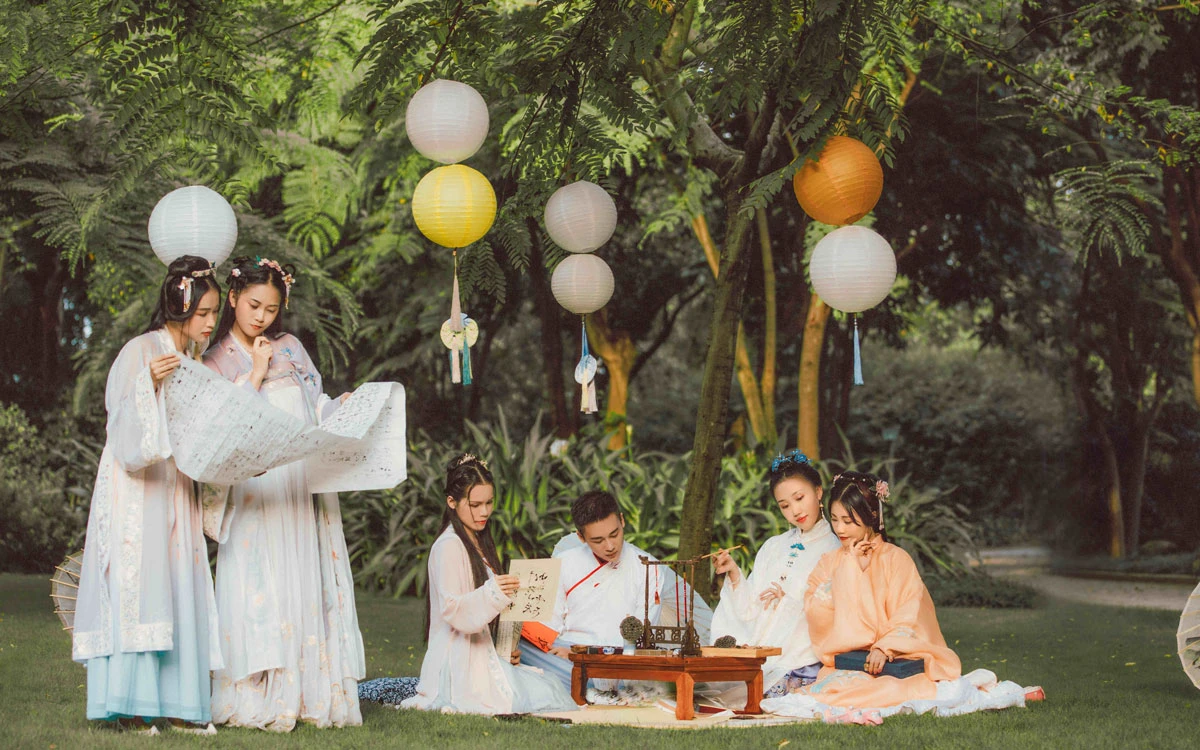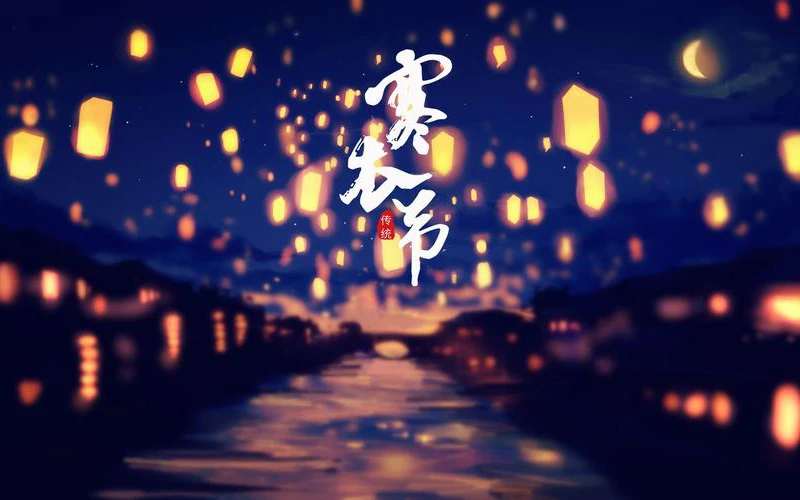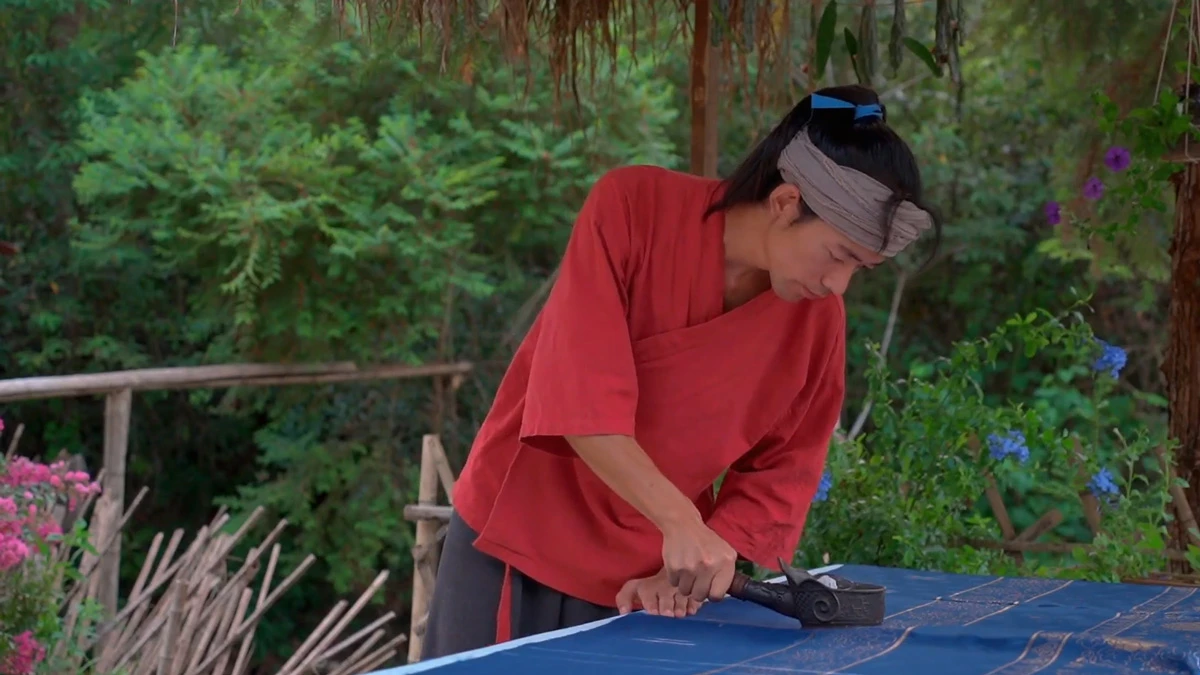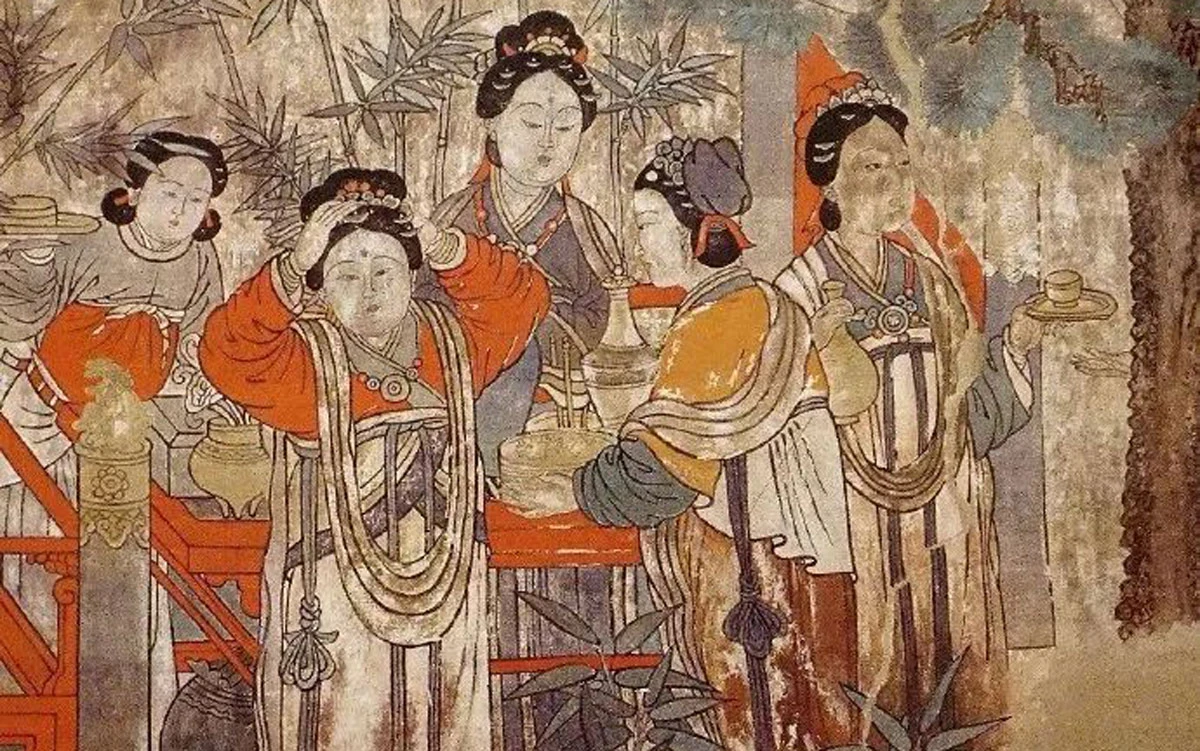Article
搜索结果:
-
Beauty of Resilience: Next Big Thing in Fantasy Drama
"Beauty of Resilience (花戎, Hua Rong)" is a ancient-style fantasy drama starring Ju Jingyi and Guo Junchen. It will be aired on June 1, 2023. Adapted from the popular xianxia novel "Wu Chang Sheng" by Lin Jiacheng, the story follows the female lead Wei Zhi and male lead Yan Yue as they overcome obstacles to rewrite destiny and save the three realms from chaos. Directed by renowned directors Chen Guohua and Hu Yijuan with script written by Qian Yu, this creative team boasts tremendous experience in storytelling; Chen Guohua has created successful ancient dramas such as "The Blooms at Ruyi Pavilion", while Qian Yu is one of the main screenwriters for "Goodbye My Princess". With their expertise at play, Beauty of Resilience's production quality is bound to impress audiences. The drama centers around the growth of Wei Zhi, the phoenix reincarnate female lead character. It tells a story of her and the male lead's affectionate entanglement, featuring many highlights such as Wei Zhi's blackening reversal and the male lead's dilemma between righteousness and love. The exquisite costumes and excellent special effects render this drama with remarkably high quality. Ju Jingyi, who plays the female lead, has a sweet appearance and… -
Wear Red Hanfu Dress to Brighten Up Your Summer
Summer is here, and what better way to celebrate the season than by brightening up your wardrobe with a stunning pomegranate red Hanfu dress. HAN TIME will use the combination of pomegranate color and hanfu as the starting point to recommend a series of suggestions for wearing red hanfu dress in summer. Pomegranate color refers to a slightly deeper shade of red, resembling the color of pomegranate fruit or bright orange-red like the color of pomegranate flowers. As summer approaches and greenery abounds, the blooming of pomegranate flowers marks the season's arrival. It is an ideal time to wear a flowing long skirt in a vibrant shade of pomegranate while standing under these blossoms with a radiant smile. When it comes to pomegranate skirts, people tend to lean towards the latter meaning as this hue is more charming and unique compared to other shades such as vermilion and pink. Have you ever heard of "kneeling under the pomegranate skirt"? The phrase has been passed down through generations related to Yang Guifei who had an affinity for both Pomegranates and dresses in that same rich hue. Emperor Xuanzong ordered widespread planting of Pomegranates within palace just for her love for them.… -
Top 20 Must-Visit China Museums: A Journey Through History and Culture
As a country steeped in culture, history, and traditions, China has no shortage of museums that tell stories of its past, present, and future. From ancient relics to modern art, these museums are a window to the country's rich heritage and offer a glimpse into its diverse cultures. With so many options to choose from, it can be overwhelming to decide which ones to visit. In this article, we've rounded up the top 20 popular museums in China that are definitely worth your time and attention. 01 The Palace Museum The Palace Museum is an exceptional museum. Established in 1925, it was built on the foundations of the imperial palaces of the Ming and Qing dynasties - the Forbidden City. After six hundred years of rise and fall, glory and shame, the doors to these royal palaces finally opened to the public. The Palace Museum boasts a collection that is unparalleled, it houses one of a kind artifacts within wooden structures preserved from Imperial China's largest palace complex in its entirety. 02 National Museum of China The National Museum of China is the highest institution representing the state's collection, research, display, and interpretation of artifacts that reflect… -
Motifs on the Lapel Edges of Traditional Chinese Hanfu Clothing
The development of Chinese motifs has a rich history, with each era having its own unique design themes and styles. Throughout history, it has been discovered that from the graphics and symbols that emerged during the primitive era of humanity, to the present day where we classify art into different categories, some commonly used themes such as floral motifs, dragon and phoenix motifs, cloud motifs, and geometric motifs have continued to exist from ancient times to the present day, and have even remained unchanged. What has changed is that the same theme has different characteristics in different eras due to differences in the expression of artificial craftsmanship. Traditional Chinese Hanfu clothing emphasizes a harmonious blend of temperament and style, and in order to not destroy the overall effect of the clothing while also making its style versatile, changes in the motifs along the lapel edges of the clothing have become an important means of decoration. From the perspective of artistic expression, motifs can be divided into abstract, figurative, and imagery forms. In the application of clothing edges, motifs are generally divided into geometric, animal, plant, and auspicious character motifs. Abstract form - geometric pattern The decorative motifs in the… -
Young Blood Season 2 Preview: A Preview of the New Suspenseful and Hot-Blooded Cdrama
It has always been difficult to make sequels to Chinese costume dramas, and they always go through all kinds of twists and turns. Even for high-quality dramas with a large audience demand, it is not an easy task to gather the same cast and crew. It is possible that the actors have moved on to other projects, and scheduling conflicts make it difficult to coordinate everyone's availability. As a result, delays are inevitable, making it hard to gather the original team. While replacing a few supporting roles may be acceptable, changing the main cast would seriously affect the show's quality, leading to a completely new drama. However, this situation has improved this year. Many popular dramas have returned for a second season, such as "Young Blood 2," "Strange Tales of the Tang Dynasty 2," "Joy of Life 2," and so on, with the original cast and crew. "Young Blood 2" has already been approved and will premiere next month. "Young Blood" was a unexpected drama when it premiered, with only Zhang Xincheng gaining some recognition from his role in "My Huckleberry Friends." As for Zhou Yutong, Wang Youshuo, Su Xiaotong, and others, they were all new faces with little recognition.… -
10 Chinese Style Illustrators to Watch Out For
From elaborate brush strokes to bold colors and intricate patterns, Chinese art has a rich and diverse history that spans millennia. Today, artists continue to be inspired by this artistic legacy, creating work that is both contemporary and rooted in traditional Chinese aesthetics. In this article, we'll introduce you to 10 talented Chinese style illustrators who are making waves in the world of art with their unique styles and fresh perspectives. 1 - Ni Chuanjing Ni Chuanjing, an illustrator from Hong Kong, China, became one of the youngest winners on Forbes's "30 under 30" art list at the age of 25. In addition, she has received a series of awards, including two gold medals from the Society of Illustrators NY, for her excellent illustration works. As an illustrator, Ni's works have always been exquisite endorsements. In the presentation of the picture, every viewer can deeply feel the delicacy, dreaminess, and skillful mastery of her style. At the same time, she also incorporates her own experiences and stories into her works, giving them a brand new soul. This allows every viewer to find their own memories in the picture and resonate with the author and the work. The biggest feature… -
Hanfu Accessory: Tuanshan History and Shapes
Vocabulary Moon-shaped fan; 团扇 (tuánshàn). Also called 宫扇(gōng shàn), 纨扇 (wánshàn), 合欢扇 (héhuān shàn), a fan that is made from silks, embroideries, golds, beads, etc. later on into the period. Barrier fan; 障扇 (zhàng shàn) - one of the earliest version of fan from ancestors. Made with pheasant’s feathers and has a long handle. Also known as 长扇 (Chǎng shàn)、掌扇 (zhǎng shàn)、五明扇 (wǔ míng shàn). It is under the category of moon-shaped fan (团扇). Imperial carriage; 辇 (niǎn). Also known as chariot. This is the earlier versions of traveling vehicles primarily used by prestigious people for ceremonial processes, imperial tours, and any other formal occasions. The usage of this is closely related to imperial court instead of public, such as for emperor, queen’s mother, empress, and imperial concubines. These types of carriage are still man-drawn, and are made of simple designs with either a cushion or a chair for the individual seating on it. History of Tuanshan The moon-shaped fan, also known as 团扇 (tuánshàn), is a traditional handicraft tool of the Han people from ancient China. It consists of four main components: the fan's frame, handles (usually short in length), the fan's surface (made of semi-transparent or opaque… -
Bamboo Weaving Reimagined: A Spotlight on Diao Kuan's Innovative Creations
Bamboo weaving is a handicraft that uses bamboo split into strips or filaments from mountain bamboo to weave various utensils and handicrafts. The craft of bamboo weaving not only has great practical value, but also has a profound historical heritage. In the history of bamboo weaving industry, it was mostly in the form of workshops, often passed down from generation to generation or through master-apprentice relationships based on workshops, where apprentices became independent after learning and then recruited apprentices, passing on their skills through oral and practical teaching. Generally used for daily necessities and agricultural tools. Bamboo weaving has a long history and is the second batch of Chinese intangible cultural heritage. Diao Kuan, a bamboo weaving craftsman born in the 1990s, is from Dangshan County, Anhui Province. As a child, Diao Kuan loved to hang around the old craftsmen, willing to spend a whole day watching them weave bamboo. The old craftsmen's hands seemed to have a magical power, turning ordinary bamboo strips into exquisite handicrafts. The love for bamboo weaving was like a seed planted in the young Diao Kuan's heart. What sets Diao Kuan apart from other craftsmen is that he injured his right hand when he… -
A Guide to Dunhuang Mural Art - Journey Through Time and Color
The caves with undulating heights and depths are truly spectacular; the exquisitely crafted statues are vivid and lifelike; the colorful and dazzling murals. For a thousand years, time has silently passed over this desert, proclaiming to the world the former prosperity and bustle of this place. Among them, murals are the most widespread and deeply ingrained art in Dunhuang. Dunhuang, known as the "Great Gallery in the Desert," has 735 caves, more than 2,400 colored sculptures, and over 45,000 square meters of murals. These precious works of human civilization include portraits of Buddha, stories of Buddha's life, myths and legends, Buddhist historical events, and Buddhist scriptures. Despite enduring wind and frost, these brightly colored murals still radiate their brilliance. To appreciate the beauty of Dunhuang, one must learn to understand the rich world within the murals. The following introductory guide to Dunhuang murals from "Art Culture China" will present the most beautiful side of Dunhuang to you. Costumes in Dunhuang Murals In the Dunhuang murals, there is a group of people who believe in Buddhism and funded the excavation of the caves. They not only funded the painting of Buddhist themes but also depicted their own popular ideas and… -
Traditional Chinese Hanfu: Evolution and Inner Beauty
Traditional Chinese hanfu costumes has been pursued by many young people. The bustling streets and crowded scenic spots are often decorated with people’s figure in hanfu. Some enthusiasts even actively hold activities for traditional cultural communication. Chinese ancient clothing culture has a long history, from the top officials to the common people, there are corresponding clothing requirements according to different social status in ancient China. I. Classification of Traditional Chinese Hanfu Clothing Ancient Chinese women's hanfu clothing can be divided into three parts: Shou Fu (首服, headwear), Ti Fu (体服, main clothing), and Zu Fu (足服, footwear). Although the styles are varied, they can be generally divided into upper and lower garments or up-and-down-attached style. Before the Western Zhou Dynasty, clothing was mainly upper and lower garments. The upper garment was called "Yi (衣)", and the lower garment was called "Chang (裳)". During the Spring and Autumn and Warring States period, people combined the upper garment and lower garment into one piece of clothing, which was called "Shen Yi (深衣)". "Shenyi" has been the representative clothing of the Spring and Autumn and Warring States period. Many documents have recorded its characteristics. The annotation in The Book of Rites - Shenyi… -
Story of Kunning Palace: Upcoming Palace Romance TV Show
The unique space of costume dramas in the Chinese drama market is indeed impressive, as proven by several recent hits. "The Ingenious One," starring Chen Xiao and Mao Xiaotong, has maintained a good level of popularity since its premiere, presenting an incredibly brilliant tactics drama. "Till the End of the Moon," led by Luo Yunxi and Bai Lu, has achieved true success, constantly breaking viewership records. Although this drama has received mixed reviews, it does not affect the enthusiasm of its fans. With such outstanding viewership, the drama has successfully boosted the popularity of many actors, including the already popular Bai Lu, who has been the subject of continuous topics. Even though this drama has already ended, there are still lively discussions about its characters. In "Till the End of the Moon," Bai Lu portrays different characters with distinctive traits and highlights, she has shown progress and is suitable for the setting of costume dramas. Now, Bai Lu will star in another costume drama that fans have been eagerly anticipating, "Story of Kunning Palace." As the countdown to its premiere continues, the drama's popularity continues to rise. Romantic Love & Intense Palace Fights The drama "Story of Kunning Palace,"… -
The Popularity of Hanfu Culture: When Traditional Hanfu Dress Comes to Contemporary Life
An increasing number of young people are beginning to experiment with wearing hanfu, these clothing styles, which were widely used in different historical dynasties in ancient China, are now being reintegrated into contemporary life and have become an important part of youth culture. The Origin of Hanfu Culture: From Niche to Popular Typically, the origin of the modern Hanfu culture is traced back to 2003. On November 22nd of that year, a power worker named Wang Letian from Zhengzhou, Henan, walked into a downtown commercial street wearing hanfu. This event was reported by Singapore's Lianhe Zaobao, making Wang Letian the first modern Chinese person wearing hanfu to appear in public. Wang Letian was introduced to hanfu culture through forums Han Wang, and around 2003, the first hanfu enthusiasts gathered around Han Wang and other online hanfu forums, gradually forming the Hanfu circle. At the same time, some offline Hanfu culture communities began to be established. Around 2011, the subculture of adolescent internet culture rapidly developed. With the successive rise of the Lolita and the JK uniform fashion subculture, as well as the development of the cosplay community, hanfu has found its place among various clothing subcultures and has gained… -
Hanfu Accessory: Gong Tao History and Differences With Si Tao
Vocab Palace Belt - 宫绦, gōng tāo, is an accessory worn around the waist to prevent dresses from flowing in the wind. It is commonly paired with hanfu for a simplistic look and referred to as such in modern times. Silk Belt - 丝绦, sī tāo. An accessory that ancient Chinese people used to refer to. However, it was not only used as a fashion accessory but also on fans or flutes. Zhiduo - 直裰, zhídāo. A traditional Chinese robe worn by scholars and officials during the Ming and Qing dynasties. It has a straight-cut Mandarin collar without openings and is a formal attire reserved for special occasions. It is worn over long shirts and wide trousers. Tassels - 流苏, liúsū. In ancient China it had different names, such as 穗子 (suìzi), 缨旒 (yīng liú), and 流苏 (liúsū). Nowadays, 流苏 (liúsū) is the most commonly used name for tassels. Silk ribbon- 绶, shòu - the ribbon with a jade or officials seals at the end. History of Gong Tao The Palace Belt, known as 宫绦 (gōng tāo), is an accessory that dates back to the Warring States Period. It is a long woven rope with tassels attached on both… -
The Art of Shu Embroidery: A Timeless Treasure of Chinese Culture
Shu embroidery, as the longest-standing embroidery in China, is one of the four famous Chinese embroidery, along with Su embroidery, Xiang embroidery, and Yue embroidery. The hands of Shu embroidery weavers not only hold a precious craft, but also carry thousands of years of reproduction and imagination of flowers, birds, trees, rivers, and nature. Take a look at the history of Shu embroidery and its exquisiteness with Cosmopolitan's interview with Wang Xia, the inheritor of Shu embroidery. The treasure of Shu embroidery begins at the tip of a needle The art of Shu embroidery, which began with a needlepoint, is a luxury for modern people, it is a craft that has been passed down for over two thousand years. Shu embroidery, with its bright and delicate colors and exquisite needlework, has formed its own unique charm, and its richness ranks first among the four famous embroideries. In fact, the history of Shu embroidery dates back to the Western Han Dynasty. "The industry of female workers, covering the world in clothes," was recorded in the "Book of the Later Han". At that time, the literary writer Yang Xiong described the scene of embroidering silk that could be seen everywhere in… -
The Ingenious One Depth Interpretation: The Return of Martial Arts
In 2023, besides mystery dramas "Who Is He", and "The Long Season" regaining their hold on the audience's attention, the tactics and heroic martial arts dramas have also made a comeback with a new style. Recently, "The Ingenious One," led by Chen Xiao and Mao Xiaotong, has rapidly gained popularity. The combination of revenge narrative, martial arts, ingenious reasoning, and commercial warfare has made this costume drama full of suspense and excitement. Many viewers are marveling at the return of the hot-blooded martial arts world that depicts loyalty, heroism, and courage. At the same time, "The Ingenious One" has also made breakthroughs in visual aesthetics, striving to retain the chivalrous charm of traditional martial arts in both appearance and essence. The antique and natural costume and makeup, gorgeous and realistic scenery, delicate and melodious music, and intense martial arts actions have deepened the quality of the drama, allowing viewers to immerse themselves in the joy and revenge of the martial arts world with the protagonist team. This drama has aroused the passion of long-hidden martial arts fans and once again sparked discussions about martial arts dramas. "The Ingenious One" is a high-quality drama that attempts to break the emotional idol… -
8 Traditional Hobbies - Pastime Pursuits of Ancient China
With the evolution of society, modern individuals have a wide variety of hobbies and interests, and so did ancient Chinese people. We have gathered 8 traditional hobbies from ancient China to explore the interesting activities of the past. Visiting temples In the agricultural society where the means of production were not yet developed, people of all ages and genders revered mysterious powers and often went to temples to seek peace. For instance, in the early days, people worshipped the Chenghuang Temple, which was believed to protect peace in a particular area. During the Tang and Song dynasties, the entertainment activities in temples gradually increased, attracting many ancient people to visit. There were various performances, including acrobatics, singing, and dancing. Watching performances During the Tang Dynasty, Canjunxi (参军戏) was very popular. Actors dressed up as Canjun, and another actor performed jokes and funny acts. It was similar to how modern young people like to watch crosstalk and stand-up comedy shows. At that time, people could resolve their troubles by watching a "Canjunxi" show. Collecting figurines "Mo He Le (磨喝乐)" was a beloved toy of young people in ancient times, mainly in the form of a child. According to… -
Modern Hanfu Promotion: Discussion on Challenges and Controversies
From historical books and museums artifacts to ancient costume dramas, and being widely worn, the steps of hanfu entering the public eye are traceable. Hanfu culture is traditional, but has also become a trend. Nowadays, there are countless young people around the world who love hanfu culture, this is not a form of nostalgia or pilgrimage, but rather hanfu's enduring vitality is due to it being a living history, a living culture, and an enduring fashion. Despite this, Hanfu is still far from our daily lives for many of us. Some people are intimidated by the complex style and impracticality of Hanfu, while others are concerned with the rigorous and strict form of Hanfu, and are afraid to try it. What are the requirements for wearing hanfu? What are the controversies about the form of hanfu? How far are we from the ultimate goal of everyone wearing hanfu? In the form of a Q&A, Harper's Bazaar and hanfu culture enthusiast and promoter Yu Zhu discuss how hanfu can enter the daily lives of every hanfu lover. The Threshold of Wearing Hanfu Yu Zhu first became aware of hanfu during her student days, from timid photo shoots in the early… -
China’s Faded Holidays - Winter Clothing Festival
History of Winter Clothing Festival Winter Clothing Festival (寒衣节, hányī jié), also known as "十月朝, shí yuè cháo," "祭祖节, jì zǔ jié," "冥阴节, míng yīn jié," "鬼头日, guǐ tóu rì," and "秋祭, qiū jì" is a holiday that occurred on October 1st on the lunar calendar. It emerged in the Zhou Dynasty but does not have any physical written records of it until the Song Dynasty. Winter Clothing Festival goes along with "Qīngmíng Festival (清明节)" and "Zhōng yuán Festival (中元节)" and get categorized as the top three "Ghost Festivals" in China. The reason is because the three festivals all focused on the living paying their respects and providing their sacrifice offerings to their ancestors on that day. While Winter Clothing Festival Is grouped under the top three Ghost Festival, it is the festival among the others that have the least presence. The other two have a strong focus on people going grave sweeping or doing something unique for this festival, but Winter Clothing Festival it’s more about people expressing the idea of; "The weather is cooling. Winter is approaching soon. We need to start sewing up warm and thick outfits for winter." If you look at China’s cultural belief development,… -
Seeking Ancient Chinese Lifestyles: Lu Lei's Seclusion
Cultivating crops and felling bamboo, crafting clothing, and refining silver, his every movement embodies the simplicity and purity of ancient times, like the ancient Chinese lifestyles. He achieves self-sufficiency in materials and mastery of skills, by reviving traditional crafts and cuisine, completely captivating the modern individual accustomed to advanced technology. "Feel the charm of traditional culture from the perspective of the ancients, and write the words of history as a vivid picture", in this article we'll introduce Lu Lei to you, learn to feel the wisdom of the ancients while experiencing the leisurely idyllic life. Lu Lei seems to have traveled from ancient times, dressed in traditional Hanfu clothing, with long hair and a headband, living in seclusion in a remote village in Fujian. He tends to a few acres of flower fields, keeping company with cats and dogs, living a leisurely and carefree life. Intangible Cultural Heritage in Ancient Chinese Lifestyles Everlasting Flower Next to the trickling stream, cut down a straight rice-paper plant, remove the branches and leaves, extract the core, and with superb knife skills, peel them into thin sheets of paper. After trimming petals of various sizes, they undergo processes such as moistening, shaping, gluing, and drying,… -
Rediscovering the Yuan Dynasty Hanfu: A Journey Through Time
The revival of traditional clothing has become increasingly popular in recent years, with more people seeking to explore cultural heritage. Among the many aspects of Chinese culture enjoying renewed interest is the traditional dress known as hanfu. While the Tang and Ming dynasties' hanfu have been the most prevalent, but the hanfu of the Yuan Dynasty is also worth knowing. In this article, Hanfu Shidai will take us through the history of Hanfu during the Yuan Dynasty and examine its distinctive features. Firstly, prior to the Qing dynasty's implementation of the "shave hair and change clothes" policy, the traditional dress system of the Han people had been continuously inherited and developed without interruption. Although the Yuan dynasty was a period of Mongolian rule, the rulers at that time did not forcibly change the mainstream Han culture, and the Han clothing system naturally continued to be inherited. Secondly, the often mentioned "Tang-style", "Song-style", and "Ming-style" are modern-day conveniences adopted to associate with corresponding relics. They are also due to the long duration of these dynasties, which formed typical styles and designs. For example, during the Song dynasty, simplicity was valued, and the simple and elegant long Beizi became popular. In the…
